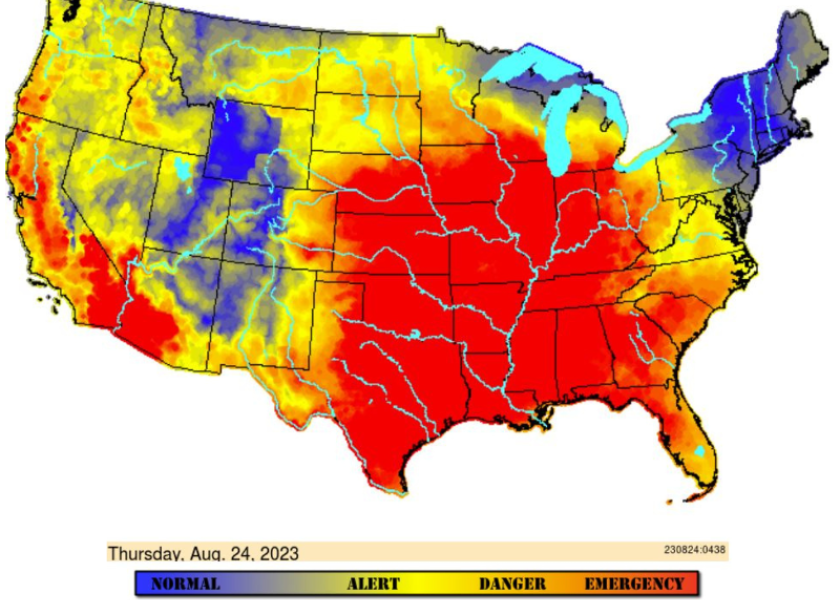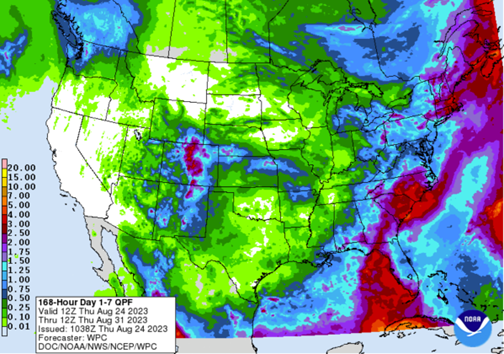Survive the Heat Wave: Expert Tips to Protect Cattle from Heat Stress

The heat is no joke, especially for cattle producers across the country as they look for ways to keep cattle cool and comfortable.
According to the USDA Agricultural Research Service’s U.S. Meat Animal Research Center, in partnership with the National Oceanic and Atmospheric Administration (NOAA) National Weather Service, heat stress forecasts are and will continue to affect major cattle producing states over the next several days.
Heat Rages On
Producers in the middle and lower Great Plains region, as well as those in the Southeast, can expect “emergency” levels of heat through the middle of next week. A large portion of the U.S. will continue to experience alerting and dangerous levels, as well.
Based on a poll of cattle producers, many of the areas suffering dry or droughty conditions will remain at the heat stress epicenter.
One rancher, based north of Forth Worth, Texas, says his area has been scorched since late June, and feeding hay for 22 of the past 25 months is "getting old and very costly."
Additionally, in central Texas, Pam Newman Williams notes pastures are terrible and with triple digit temperatures, there’s a severe fire danger.
Unfortunately, much of the U.S. will not see any large precipitation levels over the next seven days, according to the NWS Weather Prediction Center, with little to no relief to dry areas.

Combat the Heat
Cattle producer, Derek Pohl, Dorchester, Neb., has turned to water to help protect livestock during these stressful heat events.
In a video posted online, Pohl shows a portable water tank with a sprinkler attached spraying water on cattle in a pen.
Pohl notes he’s hauled almost 15,000 gallons of water so far to try to keep animals comfortable. While the lots aren’t pretty, it’s keeping cattle alive, he adds.
Along with spraying water on cattle in pens, there are additional considerations when working to help cattle through the heat.
The University of Nebraska-Lincoln shares five things that may help your livestock in heat events.
1. Water—Not only is water effective when sprayed on livestock, it’s imperative that cattle have access to plenty of clean water and that there is enough access space for all cattle, including calves, to get the water they need.
2. Shade—If possible, move cattle to a pasture that offers shade, or use portable windbreak panels to help provide shade.
3. Air Movement—A slight breeze can make a world of difference, so give cattle the opportunity to get a little wind, if there is one.
4. Surface—Access to surfaces with vegetation will keep cattle cooler.
5. Additional Stress—Consider rescheduling any events that might add stress to cattle, including gathering, weaning or preconditioning.
While keeping livestock cool is a priority, be sure to take care of yourself as well. Consider these five things and apply them to your work on the operation. Stay hydrated and stay safe.
Read More:







